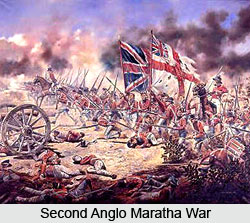 Modern History of Gujarat began with the advent of the Europeans in 1614 AD. The Portuguese built several enclaves along the coastline of Gujarat which marked the era of modern Gujarat. They also constructed many naval ports in present day Daman and Diu, Dadra and Nagar Haveli. In 1614 the British East India Company established their first base in India at Surat. Gradually the company mounted to a dominant presence in India. The British Company took much control from the hands of the Maratha Empire during the Second Anglo-Maratha War. Thus to retain their local independent rule, Many of the Marathas rulers specially the Maratha Gaekwads of Baroda willingly accepted the British sovereignty. The rule of the British officials paved one of the first of many paths to modern Gujarat.
Modern History of Gujarat began with the advent of the Europeans in 1614 AD. The Portuguese built several enclaves along the coastline of Gujarat which marked the era of modern Gujarat. They also constructed many naval ports in present day Daman and Diu, Dadra and Nagar Haveli. In 1614 the British East India Company established their first base in India at Surat. Gradually the company mounted to a dominant presence in India. The British Company took much control from the hands of the Maratha Empire during the Second Anglo-Maratha War. Thus to retain their local independent rule, Many of the Marathas rulers specially the Maratha Gaekwads of Baroda willingly accepted the British sovereignty. The rule of the British officials paved one of the first of many paths to modern Gujarat.
Bombay Presidency took over Gujarat under its political authority excepting Vadodara state which maintained a direct relationship with the Governor-General of India. Gujarat including neighboring places like Kathiawar, Kutch as well as northern and eastern Gujarat were divided into dozens of princely states in 1818 to 1947. However other districts like those in central and southern Gujarat, namely Ahmedabad, Broach (Bharuch), Kaira, Panchmahals district and Surat, were ruled directly by British officials.
During the administration of the British Raj the Indian independence movement remained very active in Gujarat. Mahatma Gandhi proved to be very instrumental in the freedom movement and stood as the greatest of all Gujarati Indian freedom fighters. Gandhiji was supported in his missions and by many other notable Gujarati Indian freedom fighters like Sardar Vallabhbhai Patel, Mahadev Desai, Morarji Desai, KM Munshi, Mohanlal Pandya, Narhari Parikh and Ravi Shankar Vyas.
Mahatma Gandhi led his famous salt satyagraha from Gujarat. Modern Gujarat still shows the grit of such single minded dedication which has helped contemporary Gujarat to grow into an industrial powerhouse.
After Indian independence and the Partition of India in 1947, the new Indian government assembled the states of Gujarat into three larger units; Saurashtra, Kutch, and Mumbai state. In 1956, Mumbai state was enlarged to include Kutch, Saurashtra, and parts of Hyderabad state and Madhya Pradesh in central India. It had a Gujarati speaking north and a Marathi speaking south. Mumbai state was finally demarcated into Gujarat and Maharashtra states. Modern Gujarat was thus formed with Ahmedabad as its capital. In 1970 the capital was moved to Gandhinagar. Thus Gandhinagar is the present capital of modern Gujarat.



















